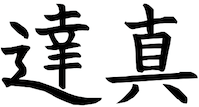Content Warning: This post contains sexual content, and descriptions of the relationship between sexuality and spirituality. If you are triggered by sexual content, connections between religion/spirituality and sexuality, or just don’t want to know about my sex life, you will not want to read this post.
Many spiritual seekers have discovered that sexuality has a powerful impact on religious and spiritual practices. Given how powerful our sexuality is, one viable option is simply to avoid sexuality, forgoing its sensual pleasures for celibacy and abstinence, and instead finding transcendent forms of pleasure and bliss through contemplative practice.
However, this wasn’t an option I was personally interested in or called to. I am a very sexual person – I love my sexuality, exploring it with myself and with romantic partners. Frankly, I wasn’t willing to sacrifice my sexuality for my spiritual practice! Moreover, I was concerned about the potential emotional and psychological impacts of denying, repressing, or shaming myself for having these basic human desires.
Happily, a few years ago, I began encountering books about the intersection of sexuality and spirituality. These books largely came from Daoist and Tantric sexual practices, although other traditions and practices in this area exist as well. I found these practices to be sex-positive and empowering. As I began to explore the exercises and practices within these books, I found that sex had new degrees and depths of pleasure for me, both on my own and with a partner.
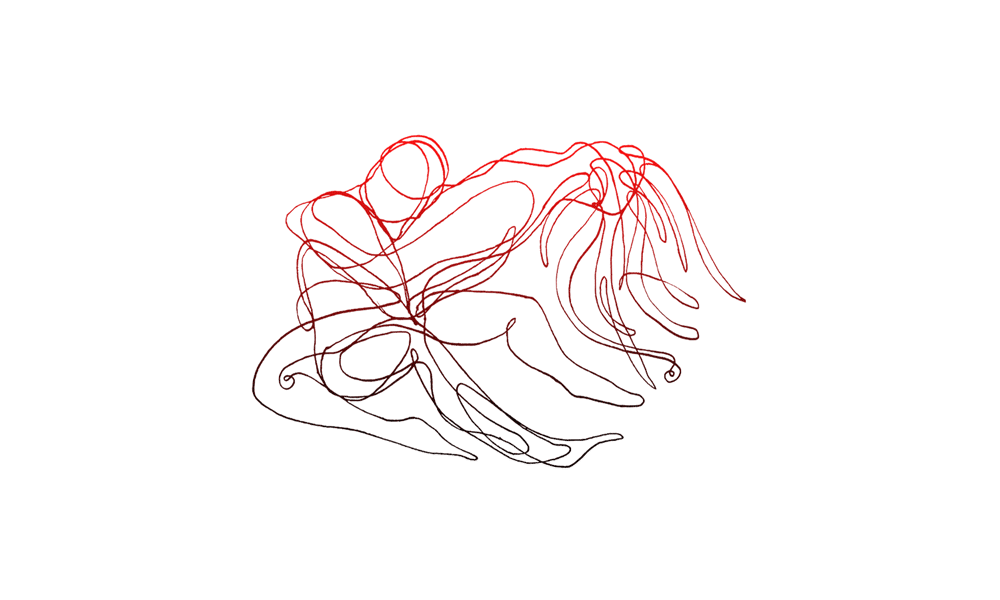
Moreover, I found that doing these exercises had tremendous benefits for me spiritually. I started to have increased body awareness, particularly of muscular tension and relaxation as well as an awareness of the energy body – not only the presence or absence of energy in the body, but also an increased awareness of how to move, shift, and transform energy. These skills provided the basis for further skill development and significant spiritual insights.
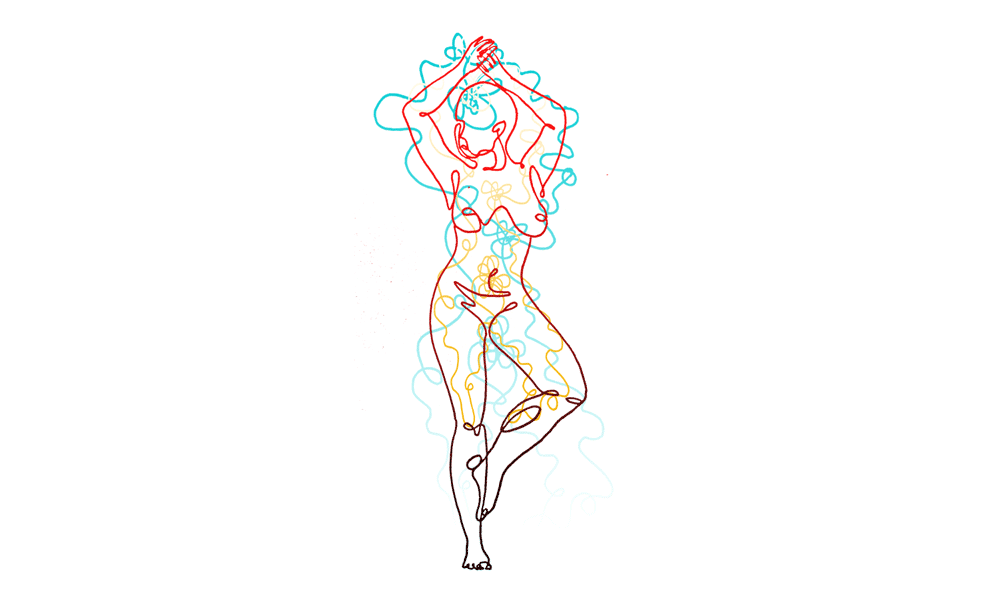
In this post, I will summarize my understanding of the sexual practices, drawing on my two favorite books on the topic, Julie Henderson’s The Lover Within and Mantak Chia’s The Multi-Orgasmic Man. I’ll also give you specific exercises that you can do to try these practices at home, whether you’re a man or a woman.
I love doing these practices, and while it is frankly terrifying for me to talk about them publicly, I think it’s worth it. These practices have brought me such joy, healing, and spiritual development, and I want people to know about them and have the ability to try them if they feel called!
Disclaimer: I am an amateur and largely self-taught in the sexual practices described here. They are also described solely from the perspective of a cis-man. Advice in this article may be misleading or incomplete, or not apply to you and your body. Accordingly, I recommend seeking out and working with a qualified teacher if at all possible.
Sexuality As Gateway to the Energy Body
Energy is a fundamental concept in multiple spiritual and contemplative traditions. It is also referred to as ch’i or qi, prana, life energy, and a handful of other terms. I used to believe energy was bullshit – and then I started experiencing it in my own body.
Energy can feel like tingling, vibration, warmth, alertness, and a variety of other sensations. This energy is already present in your body – you are just more or less aware of it.
The central insight of the sexual practices is that we can use sexuality as a gateway or portal into our energy body, with physical, psychological, and spiritual ramifications.
The Lover Within begins with a number of important propositions about the relationship between energy and sexuality:
- life itself is a form of energy
- the body and mind do not exist separate from each other but form a functional unity which meaningfully expresses that life energy
- the boundaries you experience between yourself and another, though felt, are not real at the level of energy. Those ”boundaries” have to do with variations in the distribution and density of energy rather than actual separation.
- we can learn to experience our felt boundaries differently than early conditioning prompts us to
- sensations (including the spectrum of sensations identified as emotions or feelings) can be seen as wave phenomena of this life energy, that such sensations demonstrate the properties of waves in their propagation and movement, and that, like other waves, they can be modified
- our various states of mind and emotion, though both volatile and tenacious, are modifiable
- sex is at least as much an energetic act as it is a physical one
The sexual practices described here have helped me to notice, amplify, and move the energy in my body. Learning to feel and work with the energy body is a tremendously important skill set spiritually and for our physical health – and it can be extremely pleasurable as well.
Understanding the Energy Body
A basic principle in sexual practices, as well as spiritual and energetic practices more generally, is that energy in the body follows our attention. If we move our attention to a specific region of the body, energy will circulate towards that location.
Energy travels along specific paths in the body. The most important pathway is what the Daoists call the Microcosmic Orbit, which is made up of two distinct channels, the Back and Front channels:
The Front Channel runs from the tip of your tongue to your throat and along the midline of your body down to your pubis and perineum… The Back Channel begins at the perineum and runs along the back of the body from the tip of the tailbone, up the spine and neck, to the crown of the head, and finally down the forehead to where it ends between the bottom of the nose and the upper lip, where there is an indentation.
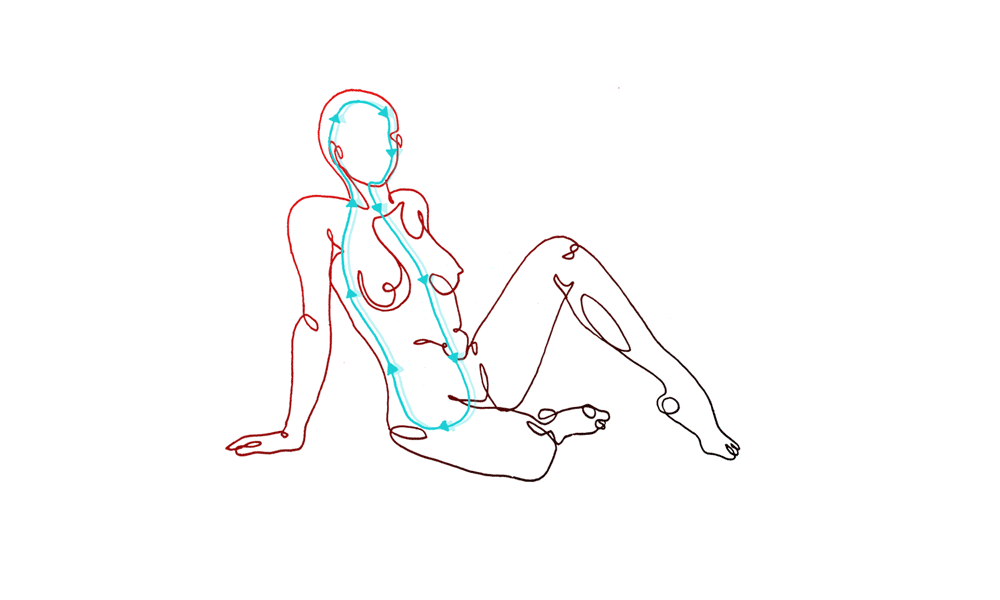
The Front and Back channels are connected by touching your tongue to the roof of your mouth. Mantak Chia describes the tongue as “a light switch that connects your front and back channels, allowing the energy to flow down the front of your body to your navel.”
Many of the exercises in The Multi-Orgasmic Man involve drawing energy up from the genitals towards the top of the spine, through the Back Channel. Although these exercises draw energy upwards, it is important that any energy that comes up goes back down. If energy is only drawn upwards, it can cause energetic, psychological, and spiritual problems.
Energy tends to move upwards on its own, like hot air rising. Accordingly, many spiritual practices involve drawing awareness and energy down the body, away from the head and towards the lower body (including the lower abdominal area, the hips, legs, and feet).
Therefore, I would only recommend drawing energy up in the context of sexual arousal – and that you bring that energy back down. If you aren’t sexually aroused, I would recommend that you focus your awareness and efforts on drawing energy down.
Ejaculation, Orgasm, and the Energy Body
For men, one of the most important insights is the distinction between orgasm and ejaculation. Mantak Chia describes them as “two distinct physical processes, though they have long been equated in the West.” That means that you can orgasm without ejaculating!
In Tantric and Daoist sexual practices, ejaculation is understood to have negative health and spiritual benefits, because you are losing your life energy. However, if you can delay or prevent ejaculation, you can “achieve multiple orgasms,” circulating that life energy through your whole body with tremendous spiritual and health benefits. Mantak Chia and others give very specific instructions for learning to distinguish ejaculation from orgasm, and how to circulate the energy through the body.
In my experience, non-ejaculatory orgasms are qualitatively different from ejaculatory orgasms. Ejaculatory orgasms are reasonably pleasant, intense, and very short. Non-ejaculatory orgasms start small, and are seemingly insignificant at first. However, if you repeatedly delay ejaculation, and allow the orgasmic energy to circulate in the body, each next non-ejaculatory orgasm becomes increasingly intense and pleasurable. I have had whole-body orgasms that include shaking, intense moaning and verbalization, contortion, and even spiritual insights.
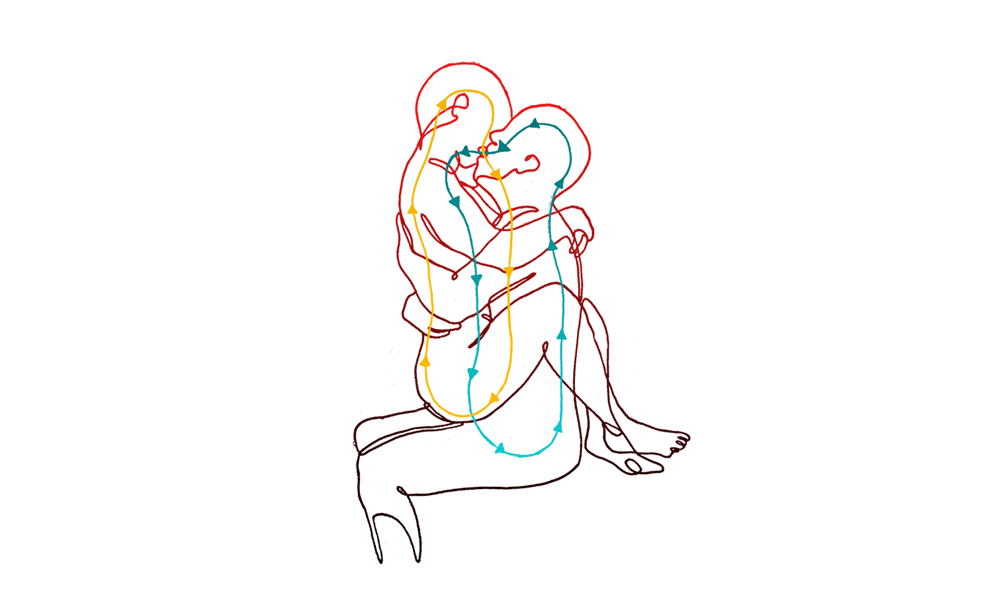
You can explore this territory by yourself, or with a partner. With a willing partner, it becomes possible to attune to each other’s energy, masculine/feminine polarities, and so on, and even to circulate energy through each other’s bodies during sex.
Trying the Sexual Practices
If you’re interested in this territory, what I’ve already mentioned may serve as a sufficient indication for you to explore on your own. However, some may benefit from more specific instructions and exercises.
The following exercises can be described briefly and practiced on their own, without recourse to further reading. All of these exercises can also be practiced by both men and women.
Exploring Sexual Charge
The first exercise in The Lover Within is one of the most powerful:
EXERCISE 1: This exercise to introduce you to charge is at once very basic and quite advanced. You could repeat it at any level of learning and still benefit. Either with a partner you trust, or by yourself, come to as high a condition of charge as you can, including your genitals, without climaxing and without tensing your muscles. (Tensing is also called contracting; see Chapter 8.) Specifically, if you are masturbating, come to a point of charge, of excitation, just a shade this side of orgasmic inevitability, then stop and wait for an hour again without contracting physically, emotionally, mentally. Be relaxed and surrendered. Turn your attention to the energy in your body (and beyond your body, if you like) and allow that energy to move as freely as you can. Lie still, or move. Make sounds, sing, dance. After an hour, continue to climax if you wish to.
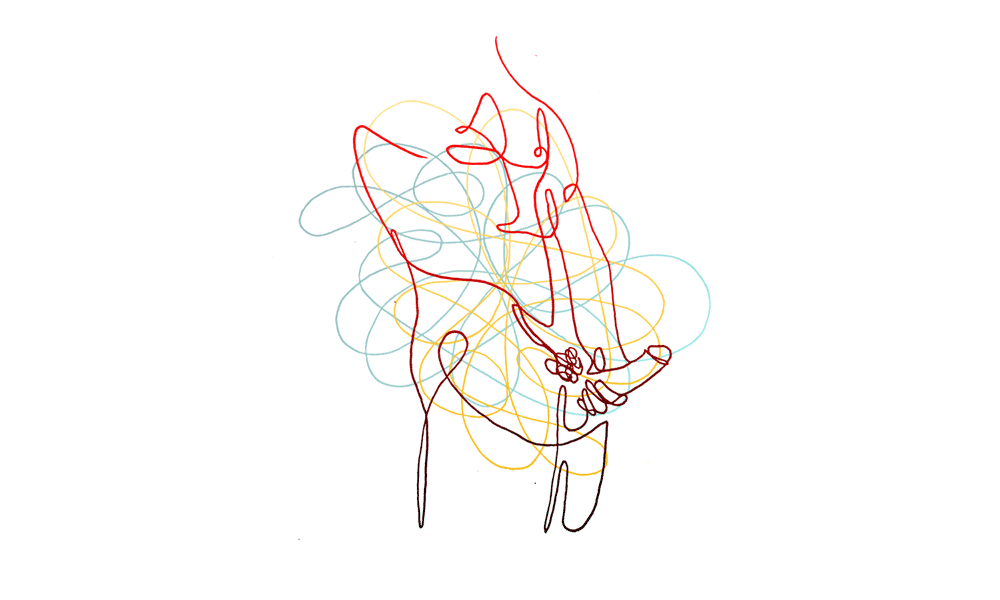
For men, your goal is to learn to be able to masturbate for fifteen or twenty minutes without ejaculating. Mantak Chia describes this as a critical milestone of self-control and access to multiple orgasms:
Once you become multi-orgasmic, you will be able to peak many times (without ejaculating) during these twenty or so minutes and you will be able to circulate rejuvenating, healing energy through your body.
One note of caution for men: pause after every twenty minutes to let your erection decrease, and “allow the blood to recirculate through the body.”
Kegel Exercises
Many of these books recommend Kegel or pelvic floor exercises, which serve to strengthen the pubococcygeus muscle or PC muscle. Both sexes have the PC muscle, and it is used in urination, ejaculation, and childbirth. Having control over these muscles helps you circulate sexual energy through your body.
There are multiple ways to exercise these muscles. You can contract your PC muscles spontaneously throughout the day, or in a dedicated session of practice. You can use them during urination, by stopping and holding the stream of urine, or by forcefully pushing the urine out.
Julie Henderson has a helpful recommendation about Kegel exercises:
Whatever else Kegels may do, they are a charging exercise without equal for the genitals. They bring increased energy, attention, intention, oxygen, tone, circulation, and pulsation to the genital tissues-for men as well as women. Like all the exercises here, Kegels must be done with awareness and full participation. If you bore yourself and make them mechanical, the tissues will not enliven, no matter how many times you prime the pump.
Exploring the Breath
Breath is one of the most important tools in sexual practices. It can help your body to relax and energy to flow. Often, when men are close to ejaculating, we are breathing rapidly or holding our breath.
Instead, practice cultivating a steady, slow, and smooth breath, and maintaining that throughout sex. The kind of breathing we are aiming for has multiple different aspects:
- gentle, smooth, and steady, rather than ragged or held
- slow, rather than rushed
- nasal, rather than through the mouth
- abdominal, rather than through the chest (if you breathe fully into your abdomen your chest may move slightly but the breath should be centered in your abs)
Practice this kind of breathing in three stages, with increasing difficulty levels:
- on its own
- while masturbating
- while having sex with a partner
Cultivating Concentration
The Multi-Orgasmic Man also recommends doing concentration exercises to cultivate your focus and attention. The specific exercise Chia recommends is called the “Century Count,” counting 100 breaths:
Slowly inhale (expanding your belly) and exhale (flattening your belly). Count each complete inhalation and exhalation as one breath. Continue breathing from the belly and counting from one to one hundred, thinking only about your breathing. If you notice that your mind has strayed, start again. Practice this exercise twice a day until you can count to one hundred with ease.
If counting to 100 is hard, you can use a smaller number (say 10 or 25), and only move up to 100 once you are able to follow the breath for that count.
Further Reading
Whether you are a biological man or woman, I recommend starting with The Lover Within (notes, exercises). The book is a little rough around the edges – it could have used some more editing, I think, and it has some questionable physical formatting choices which interfere with its readability – but I believe it is a good starting point nonetheless.
Henderson describes her own struggles with sexuality and sexual connections with her partners, and how she decided to explore sex directly, on her own terms, without importing the various ideological values about sexuality that she had been exposed to. She describes that her findings are “based on my exploration of a kinesthetic intuition of surrender to pleasure and union that had never been satisfied by sex-as-I-was-told-it-was-supposed-to-happen.”
Its approach is highly empowering, more of a sense of “go explore in these directions and see what you find” than “this is the Correct Way, follow precisely these instructions or face the consequences.”
If you are a man, I recommend Mantak Chia’s The Multi-Orgasmic Man (notes, exercises) as a straightforward and comprehensive primer to the territory. I should note that some people I’ve talked to are less bullish on Mantak Chia’s advice, claiming that the territory has more subtlety and nuance than Chia in particular (or books in general) can afford. I’ve personally found his books helpful, though.
The Multi-Orgasmic Man‘s curriculum includes techniques such as The Cool Draw and The Big Draw, which you practice on your own at first and then later with a partner. These methods are extremely useful for learning to access non-ejaculatory orgasms, especially during sex, but merit thorough explanation. I recommend reading The Multi-Orgasmic Man directly to learn about these practices.
Since I am not a woman, I don’t feel qualified to recommend a counterpart text for women, although Chia and others have written some books which I link below.
Here are some other books that I’ve read on the topic, enjoyed, and found helpful:
- Tantra: Discovering the Power of Pre-Orgasmic Sex by Yogani
- Good Sex: Getting Off Without Checking Out by Jessica Graham (notes)
- Women’s Anatomy of Arousal: Secret Maps to Buried Pleasure by Sheri Winston
And here are some related books that I haven’t read yet, but look promising:
- By Mantak Chia: Taoist Secrets of Love (Men), Healing Love through the Tao (Women), The Multi-Orgasmic Woman, The Multi-Orgasmic Couple, Sexual Reflexology
- Taoist Sexual Meditation: Connecting Love, Energy and Spirit by Bruce Frantzis
- Male Multiple Orgasm: Step-by-Step
Conclusion
The books I’ve mentioned above offer ample guidance, exercises, directions, and possibilities. I’ve found reading books to be helpful along this journey, but you can also follow your own intuition and curiosity. Exploring this territory on my own and with others has brought me great joy and insight, and I hope it will for you as well.
Thank you as well to Sílvia, S, Mako Shen, and Acid Shill for reviewing this post and providing feedback.
The art in this post was created by Sílvia Bastos, and is licensed under a CC BY-NC-SA 4.0 license. You can support her work on Patreon.
